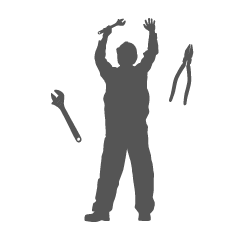Incoming Inspections


Incoming inspections of externally purchased materials and parts are performed during the processing and assembly of products. The time and work required vary greatly between full inspections and random inspections, so the measuring instruments used also vary.
Generally, the required locations are measured according to quality assurance documents and drawings supplied with the received items. Non-conforming parts are detected during this measurement process, which prevents the parts from being released onto the assembly line. If non-conforming parts are mixed with good parts, a full inspection will be required. What's more, any non-conforming part used in a completed product shipped to customers may lead to complaints. For these reasons, it is important to perform measurements during incoming inspections.
Examples of Measuring Instruments Used
- Metal scales
- Vernier calipers
- Micrometers
- Gauge blocks
- Measuring microscopes
- Coordinate measuring machines
Key Points for Selecting a Measuring Instrument
- Received parts must often be used immediately in product assembly, so inspections must be performed quickly. Therefore, measuring instruments that can measure multiple points quickly and accurately are absolutely necessary.
- Because many different types of parts are received, measuring instruments with easily configured measurement settings are very useful.
Precautions for Measurements
- To ensure work efficiency and measuring instrument quality control, clarify the storage location used for the measuring instruments, and the person in charge of managing the instruments.
- When measurement will be performed by multiple individuals, standardisation of the measurement methods should be promoted. For example, when performing measurements with hand calipers and micrometers, care must be taken to ensure measurements are performed with the same contact pressure.
- Differences may arise between the values obtained in inspections performed by external suppliers and the values obtained during incoming inspections. In such situations, it is absolutely necessary to not only standardise measurement methods within the company but also to match the measurement methods used by the external supplier. Depending on the situation, create statistical data such as a stratified scatter plot to clarify the differences in measured values between measuring instruments, individuals performing the measurements, and external suppliers. Then, consider sharing measurement information and improving measurement methods.


